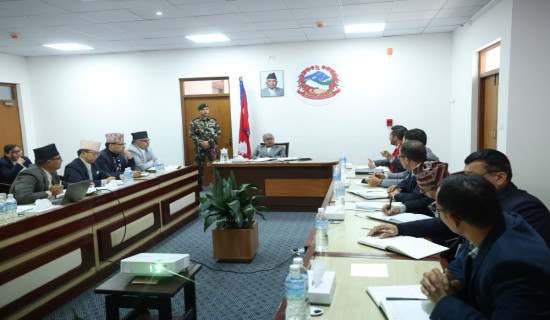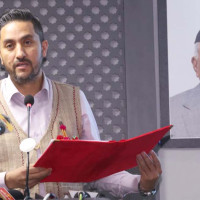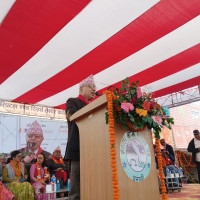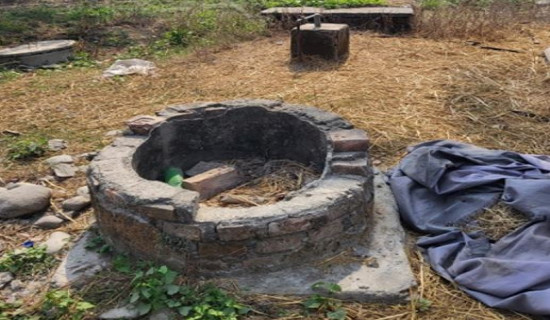- Tuesday, 9 December 2025
Eating Wild Mushrooms Can Be Deadly
For centuries, mushrooms have been a staple of traditional diets and medicines in many communities around the world. Many of the wild varieties have a well-established nutritional and therapeutic benefit. Several species are commended for their vitamins, antioxidants, and even anti-cancer qualities. Not all mushrooms, however, are suitable for human consumption. In fact, eating wild mushrooms without the right information can be fatal. Thousands of people worldwide suffer from mushroom poisoning every year, and many of them die as a result. This serious public health concern necessitates immediate awareness-raising, education, and policy action because it is particularly common in rural and forest-fringe populations.
Wild mushrooms' earthy flavour, natural abundance, and sense of tradition and independence are what make them so alluring. Foraging for wild mushrooms is a seasonal activity that augments food and income for a large number of rural inhabitants, particularly in countries like Nepal, India, and parts of Africa and Eastern Europe. Unfortunately, there are no labels for nature. Even skilled foragers can make deadly blunders because many hazardous mushrooms seem so much like edible ones. A minor variation in colour or pattern on the cap or stem could be the difference between a medical emergency and a dinner.
Toxic Species
The deadly toxins, such as amatoxins, found in Amanita phalloides (death cap), Amanita virosa (destroying angel), and Amanita verna (Fool’s mushrooms) are among the most hazardous wild mushrooms. Because of their remarkable resilience, these poisons continue to be lethal even after cooking. Once consumed, they mostly target the kidneys and liver, frequently resulting in irreversible damage. Abdominal pain, diarrhea, vomiting, and dehydration are some of the symptoms that usually appear 6–12 hours after intake. If prompt treatment is not received, acute liver and renal failure may develop after an apparent healing phase, resulting in a coma and death within days. Many mushroom poisons have no known cure; therefore, supportive treatment is still the only option. In mushroom poisoning, it is said that the longer it takes to show the symptoms, the more deadly it is.
Mushroom poisoning goes unreported, is misdiagnosed, or is not given the prompt attention it needs in many developing nations. Rural health centres frequently lack the intensive care unit (ICU) facilities, toxicological support, and diagnostic equipment needed to save the lives of people affected. Lack of education further compounds the problem. Many people place their faith in myths, traditional knowledge, or physical tests that are dangerously inaccurate and lack scientific support, such as checking to see if animals eat the mushroom or whether it changes color on a silver spoon after cooking.
Children are more at risk due to their natural curiosity and the fact that toxicity increases more quickly in smaller bodies. Whole families and communities can be devastated when a child dies from unintentional poisoning from something as seemingly innocuous as a mushroom. Edible mushroom knowledge is transmitted orally from generation to generation in many cultures. Traditional knowledge is useful, but it frequently lacks the accuracy and rigour needed to handle the complexities of mycology, or the study of fungi. Ignorance, peer pressure, or overconfidence can all result in deadly decisions. Misidentification of a single mushroom in a batch can cause a medical disaster out of a healthy family supper.
In other places, people also think that "natural" means "safe." However, this myth is dangerous. Mushrooms contain some of the strongest poisons that humans have ever encountered. Foraged mushrooms can be a double-edged sword, even if some communities rely on them for revenue. People may unintentionally sell poisonous mushrooms in marketplaces with lax or nonexistent regulations, endangering consumers. Hospitalization, missed productivity, and the devastating emotional toll on families are just a few of the financial consequences of mushroom poisoning. It is significantly less expensive to prevent poisoning than to treat it.
Education is the most effective strategy to prevent mushroom poisoning. High-risk groups must be the focus of public health efforts that inform people of the risks associated with eating wild mushrooms. It is important to disseminate information that makes the risk obvious through community gatherings, radio stations, schools, and health posts.
Governments ought to spend money translating local languages and dialects into illustrated guides that distinguish between edible and toxic mushrooms. It is important to educate foragers to only harvest and consume mushrooms those they are very confident are safe—if in question, discard them. Missing a meal is preferable to endangering one's life. Since mushroom growth and poisonings are most prevalent during the monsoon season, local governments can help by prohibiting or regulating the sale of wild mushrooms.
Social and political necessity
Healthcare professionals need to be prepared to identify the signs of mushroom poisoning and act promptly, particularly in rural regions. If given on time, supportive care, activated charcoal, and early gastric lavage can save lives. To guarantee prompt transportation to advanced care facilities, referral processes ought to be reinforced. Nepal Poison Information Center (hotline: 015919513; 9851038490) can offer 24-hour assistance for suspected poisoning cases.
Preventing fatalities from wild mushrooms is a social and political necessity, not just a question of individual accountability. We cannot afford to lose people to something as avoidable as eating poisonous mushrooms. This problem also highlights a larger need to incorporate public health messages, food safety, and environmental education into our rural development plans. Families and communities that rely on the forest for sustenance will continue to suffer if it is ignored. We can guarantee that people can safely enjoy the abundance of nature by raising awareness, educating people, enforcing regulations, and being prepared medically. Until then, the message needs to be very clear: do not take the chance of dying by eating wild mushrooms.
(Dr. Lohani is the executive director at the Health Concern. lohanis@gmail.com)
















